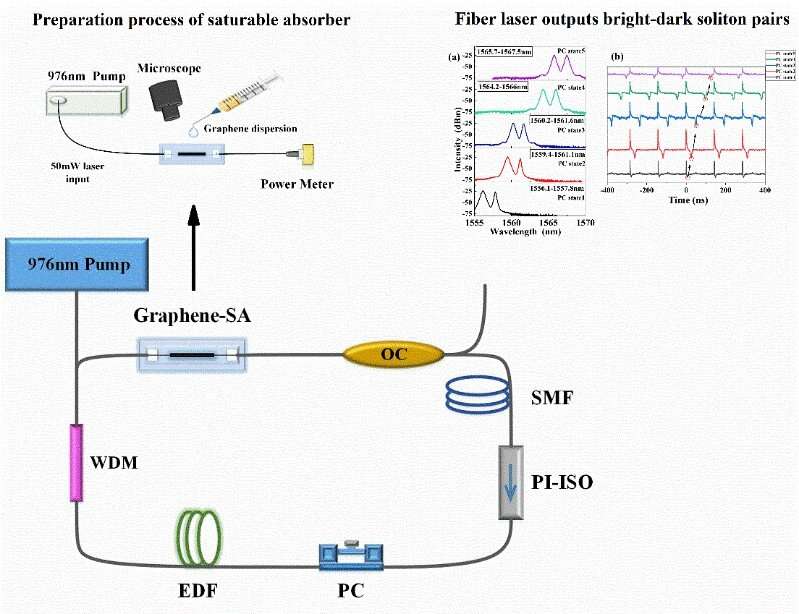
Passive mode-locked technology utilizes saturable absorbers’ nonlinear absorption effect to regulate the cavity’s loss and phase to generate mode-locked pulses. Graphene has a unique energy bandgap structure, a low absorption coefficient, a considerable modulation depth, and an ultrawide operating spectral range (300–2,500 nm).
Graphene has become an ideal saturable absorber in the Ultrashort pulse output of fiber lasers. Researchers have succeeded in many graphene mode-locked technology experiments to achieve mode-locked pulses. Various bright pulses have been reported, and laser pulses can also be divided into bright and dark pulses based on energy distribution patterns.
Researchers led by Prof. Mingyu Li at Changchun University of Science and Technology (CUST), China, are interested in graphene mode-locked fiber laser. Their idea is to prepare a graphene microfiber composite structure through the optical deposition method, which achieves an all-fiber structure and solves the problem of the low modulation depth of saturable absorbers.
The paper, “Generation of mode-locked states of conventional solitons and bright-dark solitons in graphene mode-locked fiber laser,” has been published in Frontiers of Optoelectronics.
In this way, a graphene mode-locked fiber laser was constructed in the negative dispersion region, and the output characteristics of two switchable mode-locked pulses in the graphene mode-locked fiber laser, the effects of pump power and polarization state on bright dark soliton pairs, and dual-wavelength tunable characteristics were studied. This study will further expand the application of graphene in fiber lasers.
More information:
Zixiong Li et al, Generation of mode-locked states of conventional solitons and bright-dark solitons in graphene mode-locked fiber laser, Frontiers of Optoelectronics (2023). DOI: 10.1007/s12200-023-00067-2
Provided by
Frontiers Journals

READ MORE
14 Fun Facts About Penguins
Emperor penguins swimming Photo by Polar Cruises Penguins seem a bit out of place on [...]
10 Things We Thought Were True Before the Scientific Method
Experiments! A critical part of the scientific method. These young women participate in an experiment [...]
Chemically functionalized polymer nanoparticles reduce friction on steel surfaces
Graphical Abstract. Introduction of epoxy groups into sterically-stabilized diblock copolymer nanoparticles leads to their efficient [...]
Geeky Gifts for Your Valentine
Baby, we’re pair-bonded for life. Image courtesy of Etsy user whatnomints Valentine’s Day is right [...]
New tool helps nanorods stand out
Rice University scientists have created an open-source algorithm, SEMseg, that simplifies nanoparticle analysis using scanning [...]
12 Of The Coolest Theoretical Ideas From Science Fiction
For generations science fiction writers have helped to shape the future with their imaginations. In [...]
Microbial food as a food production strategy of the future
Schematic diagram portraying various microbial biomass production strategies utlizing sustainable feedstocks. Credit: The Korea Advanced [...]
Quantum computing just got hotter: One degree above absolute zero
Credit: Diraq For decades, the pursuit of quantum computing has struggled with the need for [...]